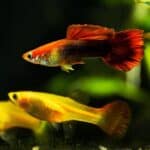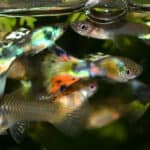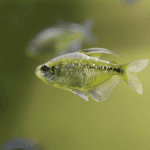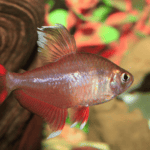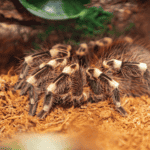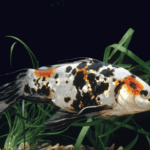Endler’s Guppy, scientifically known as Poecilia wingei, is a captivating species within the aquarium hobby appreciated for its vivid coloration and dynamic presence within a tank. These small freshwater fish hail from northeastern Venezuela where they occupy a range of freshwater habitats. They are notably resilient and adaptable, qualities that make them well-suited for aquarium life. Well-regarded for their brilliant hues and spirited behavior, Endler’s Guppies are often sought after by beginners and experienced aquarists alike.
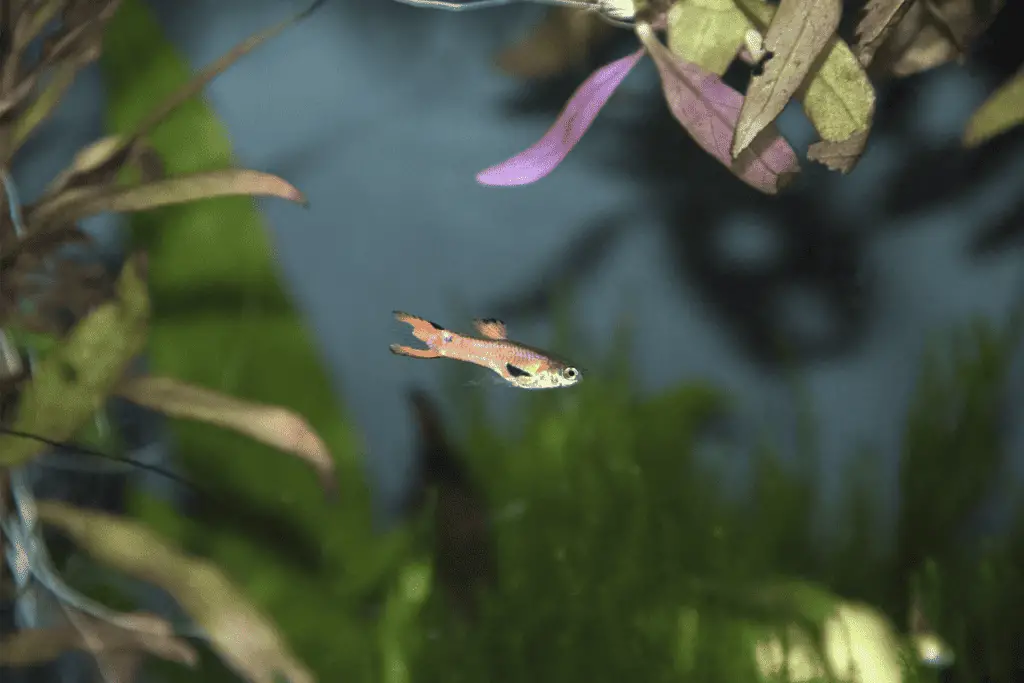
Endler’s Guppies demonstrate a remarkable ability to reproduce, bearing live young rather than laying eggs. Their peaceful nature and modest care requirements contribute to their popularity. Males typically display a kaleidoscope of colors, while females are less flamboyant yet equally integral to the species’ charm. These fish are not only a visual asset to the community aquarium but also serve as a beacon for responsible fish care and breeding practices.
Key Takeaways
- Endler’s Guppy is an adaptable and colorful freshwater fish suitable for all levels of aquarists.
- These livebearers are peaceful, making them excellent residents in community tanks.
- Maintaining optimal health for Endler’s Guppies requires understanding their specific care needs and habitat requirements.
Origins and Natural Habitat
Within our exploration of Endler’s Guppy, it is critical to address their origins and the environments from which they hail. As vibrant freshwater fish, their beginnings trace back to specific locales within Venezuela, marking an intrinsic connection to their natural ecosystems.
Geographical Range
Endler’s Guppy, scientifically known as Poecilia wingei, is indigenous to Venezuela, marking a specific geographic range within South America. Our knowledge confirms that they originate from areas including:
- Laguna de Patos: The primary collection site of the species.
- Paria Peninsula: Notably encompassing warm water habitats, essential for their survival.
- Regions such as Campoma and Buena Vista: Further extending their native range within Venezuela.
Typical Habitats
In exploring their typical habitats, we discover that Endler’s Guppies flourish in warm, slow-moving waters abundant with plant life. Their natural ecosystems often consist of:
- Shallow lakes and lagoons: Providing necessary refuge and resources.
- Freshwater environments replete with vegetation, serving as both hiding spots and food sources.
By understanding their geographical origins and natural habitats, we gain insight into the core elements that define the existence and proliferation of Endler’s Guppies in their own ecological niches.
Physical Characteristics and Appearance
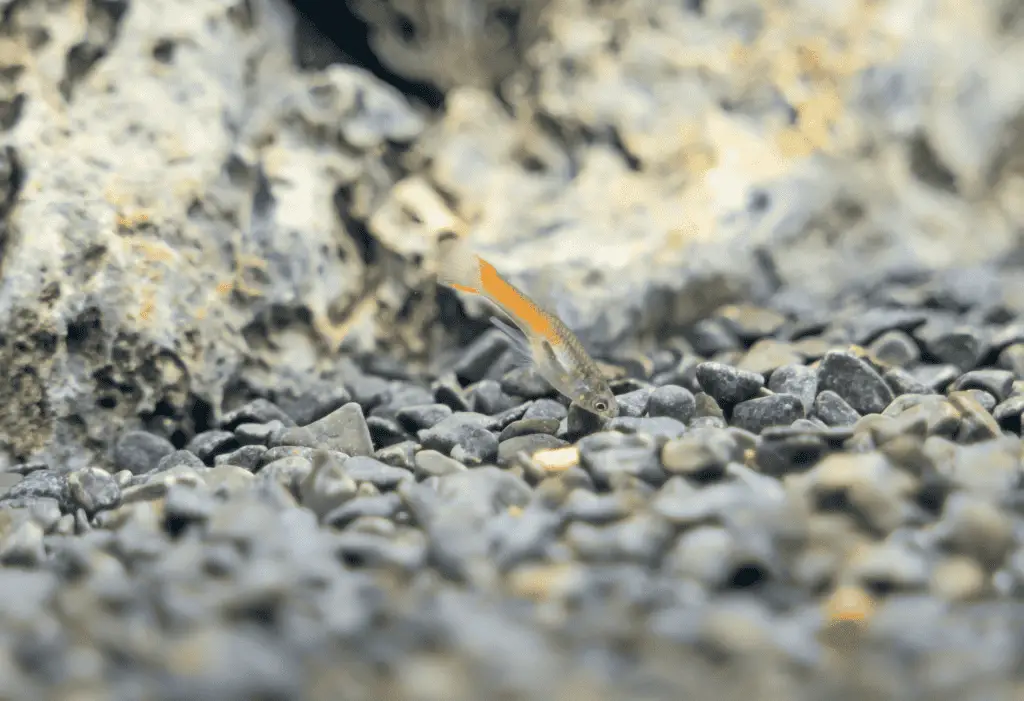
We are exploring the distinctive appearance and physical traits of the Endler’s Guppy, scientifically known as Poecilia wingei. Notable for their vibrant colors and small size, these guppies have sexual dimorphism, meaning males and females exhibit different characteristics.
Distinctive Features
Poecilia wingei, commonly referred to as Endler’s Guppy, is a small-sized fish that typically reaches about 1 inch (2.5 cm) in length. It’s a freshwaterspecies that has a remarkable ability to stand out in an aquarium setting due to its size and specific features.
Size:
- Males: Generally smaller, around 1 inch (2.5 cm).
- Females: Slightly larger than males but still small in size.
Sex: Endler’s Guppies exhibit sexual dimorphism.
- Males: More vibrant and colorful with elaborate patterns.
- Females: Less colorful, often grayish or silver with subtler markings.
Colors and Patterns
Endler’s Guppy males are renowned for their vibrant colors and intricate patterns, which can vary widely among individuals.
Color and Coloration:
- Males: Display a spectrum of bright hues such as red, orange, green, and blue.
- Females: Tend to have more subdued coloration, leaning towards silver tones.
Appearance:
- Males: Their bodies can be covered in leopard-like spots, stripes, and an array of geometric patterns.
- Females: May exhibit lighter patterns and are generally not as striking as males.
The striking appearance of the Endler’s Guppy makes it a favorite amongst aquarists who value the species for its ability to enhance the visual appeal of a tank with its small but distinctly vivid presence.
Aquarium Care and Requirements
In caring for Endler’s Guppy, we prioritize creating a suitable habitat that caters to their specific needs, ensuring a healthy diet, and maintaining optimal water parameters to mirror their natural environment.
Tank Setup
We recommend a minimum tank size of 10 gallons to provide ample space for Endler’s Guppies to swim and exhibit natural behavior. For filtration, a sponge filter is ideal as it offers gentle water flow while effectively cleaning the tank. The inclusion of decorations and plants, especially floating plants, not only enhances the aesthetic appeal of the aquarium but also provides necessary hiding spaces and reduces stress in the fish. A layered substrate will support plant growth and should be chosen with consideration for its effect on water conditions.
Water Parameters
Our goal is to maintain stable and appropriate water conditions that include:
- Water Temperature: 72-82°F (22-28°C)
- pH: 6.7-8.5
- Water Hardness: 5-15 dGH
Regular monitoring and a reliable filtration system are critical to maintaining high water quality. Regular water changes are also essential in keeping nitrate levels low and preventing the buildup of harmful substances.
Diet and Feeding
Endler’s Guppies are omnivorous, requiring a balanced diet of flakes, pellets, and live food to thrive. We feed them high-quality flake food as a staple, supplementing with brine shrimp, bloodworms, daphnia, and tubifex to ensure a varied diet. Feeding should occur once or twice daily in small amounts, which they can consume within a few minutes to prevent algae growth from excess food.
Behavior and Social Dynamics
In our exploration of Endler’s Guppy, we focus particularly on their behavior and social habits, understanding their peaceful nature and distinctive breeding patterns.
Temperament
Endler’s Guppies are peaceful and active fish, often displaying a vibrant energy in their movements. They are not aggressive, making them excellent candidates for community tanks. It’s imperative to monitor their interactions, as we aim to prevent any behavioral stress. They tend to form loose schools, showing a strong compatibility with other non-aggressive fish.
- Active: Constant swimming and exploration are typical.
- Peaceful: They cohabitate well with other non-aggressive species.
Breeding Habits
As livebearers, Endler’s Guppies have a straightforward breeding process. We note that males frequently pursue females, necessitating a balanced male-to-female ratio for optimal well-being—ideally 1 male to 2-3 females. This strategy reduces stress and potential harassment, promoting a harmonious environment. They are hardy breeders, and you can expect a continual addition to the population if both sexes are present.
- Livebearers: Females give birth to live fry rather than laying eggs.
- Breeding Ratio: A healthy male to female ratio is crucial for stress reduction.
Health and Maintenance
In caring for Endler’s Guppies, we prioritize both their health and the maintenance of their environment. Our approach ensures these hardy and peaceful fish thrive in the aquarium.
Common Health Issues
Ich (White Spot Disease): We often encounter Ich as small, white dots on the fish’s body and fins. Early detection and treatment are crucial.
- Symptoms: White spots, rubbing against objects, clamped fins
- Treatment: Increase water temperature, administer copper-based medications or malachite green
Fin Rot: Bacterial infections can lead to Fin Rot, typically resulting from poor water conditions or injuries.
- Symptoms: Frayed or disintegrating fins, redness at the base of fins
- Treatment: Improve water quality, antibacterial medication
Maintaining optimal health includes regular observation for any signs of disease and prompt treatment. With a proper care regimen, Endler’s Guppies have a lifespan that can reach up to 2-3 years.
Aquarium Maintenance
Effective maintenance of an aquarium housing Endler’s Guppies includes regular water changes and the monitoring of water parameters to ensure a stable environment.
-
Water Changes: We perform weekly water changes of 25-50% to keep nitrate levels low.
Parameters to Monitor: Temperature, pH, ammonia, nitrites, and nitrates
- Ideal Temperature: 72-78°F (22-26°C)
- pH Range: 6.7-8.5
For beginners, it’s advisable to test the water frequently as Endler’s Guppies are sensitive to abrupt changes in water chemistry. Proper care and a consistent maintenance schedule are effective in preventing most diseases and contributing to the overall health of these vibrant and peaceful fish.
Frequently Asked Questions
In this section, we address some of the most common inquiries about Endler guppies to share insights into their compatibility, differences from traditional guppies, lifespan, breeding habits, and suitable tank environments, as well as their overall hardiness in home aquariums.
What are ideal tank mates for Endler guppies?
Endler guppies thrive in the company of peaceful fish that are not large enough to view them as prey. Ideal tank mates include small tetras, dwarf corydoras, and rasboras. It’s crucial to avoid larger, aggressive fish that may harass or harm them.
How do Endler and traditional guppies differ?
Endler guppies, although similar to traditional guppies, have distinct characteristics. They are generally smaller and boast more vibrant color patterns. Endlers also display different behavior and may have slightly varying care requirements.
What is the typical lifespan of an Endler guppy?
An Endler guppy typically lives for around 2 to 3 years. With optimal care, including a well-maintained tank, proper diet, and controlled breeding, they can potentially maximize their lifespan.
What are the breeding habits of Endler guppies?
Endler guppies are livebearers, meaning females give birth to free-swimming young rather than laying eggs. They have a reputation for being prolific breeders, and in favorable conditions, they can produce offspring every 4 to 6 weeks.
What tank conditions are optimal for Endler guppies?
Endler guppies require a well-cycled aquarium with temperatures between 72°F and 82°F (22°C-28°C). They prefer a slightly alkaline pH of 7.0 to 8.5 and benefit from a planted tank that provides cover and mimics their natural habitat. Regular water changes are crucial to maintain water quality.
Are Endler guppies considered a hardy species for aquariums?
Yes, Endler guppies are considered a resilient species well-suited for aquarium life. They adapt well to a variety of water conditions and are tolerant to changes, making them an excellent choice for beginner aquarists.

